Description
The Real History or Nunchacku
Article by http://www.nunchaku-do.com/histor_e.htm
In a popular myth which has been repeated in book after book, we have been told that the?nunchaku was originally a rice flail which was converted by Japanese farmers into a deadly weapon to fight against samurai. This myth, however, is incorrect on all four points: The nunchaku was not a Japanese weapon, it was never used as a rice flail, it was not developed by villagers and it was never used against samurai. The nunchaku, as we know it, comes from Okinawa?(Uchina), today a part of Japan. Okinawa lies almost midway between Taiwan and the Japanese “mainland”, and is the largest island in the?Ryukyu?(literally “rope”) archipelago, a 650?mile long chain of small islands between southern Japan and Taiwan.
Okinawa today is part of Japan, but the Okinawans are not Japanese and have their own culture and language, although the latter is gradually being replaced by Japanese. The Japanese language does not even contain a word for the nunchaku. When one needs to write “nunchaku” in Japanese he may do it in one of two ways: He may use?katakana, the syllabic/phonetic alphabet used in the Japanese language to write foreign and loan words, writing the syllables “nu-n-cha-ku”. Or, instead, he may use the Chinese characters for “two member stick” (or “double part baton”), which is pronounced?“shuang?jie?gun”?in Chinese,?“nun?cha?kun”?in Okinawan and?“so?setsu?kon”?in Japanese.
Many think that the nunchaku has descended from the rice flail (utzu), but this is erroneous. To understand why, imagine that you want to use the nunchaku to thresh rice stalks laying on the ground. In order for the swinging arm of the nunchaku to land flatly, you would have to bend over with your head close to your knees or kneel on the ground. In the former position, every time you swing up the flailing arm you might be struck on your back, while the latter position is not really functional as anyone who has had to kneel on rice can tell you. The actual Okinawan flail, like the European flail, has a handle as long as a man’s height to make the threshing process easier. So the belief that the nunchaku descends from the Okinawan rice flail is definitely baseless. Another reason for this error, besides the obvious resemblance of the flail to the nunchaku, may be the existence of the a combat flail (uchibo), which really is a modified rice flail, among the weapons of Okinawan?kobujutsu. There are a few more rational beliefs about the nunchaku’s prototype. The most credible version (attested to by a number of Japanese masters of kobudo) is that the nunchaku descends from an Okinawan horse bit (muge). Initially the handles of the bit were curved as you can see in the photo. Later it was changed to the straight-handled weapon that we know today.
There also exists versions of the nunchaku’s history which state that it was once a night-watchman’s rattle or a tool for barking banana trees (the best fabric on Okinawa was produced from banana bark). Finally, one additional version, supported by such experts as Miyagi and Ikeda, says that the nunchaku was copied from a Chinese weapon brought to Okinawa by Chinese immigrants. Indirect evidence of this version is the fact that the word used for “nunchaku” is borrowed from the Chinese language.
How did a farmer’s tool evolve into a deadly weapon and who used it? To answer these questions let’s take a tour through Okinawan history.
In 1429 king Sho Hashi, founded the Sho dynasty by uniting three principalities of Okinawa, Hokuzan, Nanzan and Chuzan, creating the Ryukyu kingdom with the city of Shuri as its capitol. Sho Hashi now had a region with a number of united domains, not a single country. Each lord sat in his own castle, governed his fiefdom by himself, had his own army, imposed his own taxes, and had his own code of law and courts. The process of uniting these domains into a united country was completed after about 50 years by one of Sho Hashi’s successors, king Sho Shin who turned the domains into a single country with one government, one army, and a single code of laws, like today’s modern countries.
To reduce the possibility of a revolt in Okinawa, Sho Shin gathered all the princes (aji) in Shuri and declared a prohibition against carrying weapons. Only the king’s army and nobles were allowed to carry weapons and no one but the king could possess considerable amounts of weapons. As a result, the king’s army became the only one on Okinawa.
In 1609 the Ryukyu kingdom which, until then, had existed as an independent country, was occupied by the Japanese princedom of Satzuma and became its vassal until 1879 when, after the Meiji revolution, Okinawa was annexed by Japan. However, during all the years between 1609 and 1879 the Japanese presence on Okinawa was minor; there were only a few dozen samurai for the whole country and most of them lived in the city of Shuri. The Japanese government confirmed Sho Shin’s decree against weapons and also added prohibitions against importing weapons and the possession of firearms. However, the legends about the total disarmament of the Okinawan population are no more than legends. Okinawan nobles were still allowed to carry their swords and members of the royal family and princes were even allowed to have rifles for hunting.
In karate books it is often written that farmers developed Okinawan martial arts, but this does not make any sense. Okinawa was never a rich country and, after the onset of the Japanese occupation in the 17th?century, it became poverty-stricken. Farmers had to work from sunrise to sunset just to feed themselves. Villagers just didn’t have the time or the vigor to practice fighting and to develop sophisticated martial arts.
It was the nobles who developed Okinawan martial arts. The aristocrats (kazoku) practiced fighting arts mainly as a pastime, but for “serving nobles” (shizoku) knowledge of the martial arts was a must as many of them served the government as army or police officers, tax collectors, and so on. If we look at the genealogy of any style of Okinawan karate or kobujutsu, we see that the founder of the style is the scion of a noble family, or that he learned martial arts from a noble.
“Sorry,” one who is familiar with Okinawan kobujutsu weaponry may say at this point, “but if the martial arts of Okinawa were really developed by nobles who were allowed to carry swords and spears, why did they develop fighting techniques with sickle, oar, hoe and other farmer’s and fishermen’s tools?” The author of this text also asked himself this question and then he asked experts in Okinawan history. Here is the answer:
“Serving nobles” on Okinawa, as you may guess from their title, served the government as military and police officers or as state officials. They protected and kept “law and order” and received wages from the king. They had no other source of income as the law prohibited them from any other occupation. At some point in time, this wage became insufficient to feed their families and many of them were reduced to beggary. In 1724, in order to solve this problem, the nobles were granted permission to become merchants, farmers, or craftsmen. Many of them left the state service and had to move into villages with their families just to feed themselves. After a century and a half, following the Meiji revolution, Okinawan nobles (as well as Japanese samurai) had their privileges revoked, including the right to carry swords, and they were deprived of their wages. If you read “Gone with the Wind” you will surely remember the story of the aristocrats of yesterday who had to become shopkeepers and bakers to survive. And so it happened to the aristocrats on Okinawa. Members of the royal family worked as teamsters and night watchmen. Princes became hewers of wood and sellers of pigs in the marketplace. Many of the nobility moved into villages. The farmers, of course, weren’t happy to meet their new neighbors and they tried to drive them off the villages’ lands. These efforts often resulted in fighting. The number of thieves and robbers also increased in the country where food was a valuable. As a result, “farmer-princes” had to refresh their fighting skills.
The nobility, of course, would have preferred to fight with their swords rather than with their bare hands, but they were prohibited from carrying weapons. But what does a warrior do when he can’t use his weapons? He arms himself with anything in reach. Shaolin monks developed fighting techniques with slippers and baskets; ninjas learned to kill their opponents with chopsticks. And Okinawan nobles, deprived of their arms, also developed weapons from any improvised means they could.
Staffs and sticks of different lengths (the six foot?rokushakubo, four foot?jo, three foot?hanbo, etc.) always were used as auxiliary weapons, so they were adopted first. Sickles (kama), oars (eku), hoes (kuwa), gaffs (nunti-bo), millstone handles (tonfa) and other objects that could effectively be used in a fight were also not forgotten. Two sticks connected by rope caught someone’s eye. A warrior swung them, pictured himself bashing an opponents head?- and nunchaku was born.
The nunchaku wasn’t a very popular weapon. We deduce this because no traditional nunchaku?kata?is known today. By contrast, we currently know more than a dozen traditional staff katas. The lack of popularity for the nunchaku probably came from its low effectiveness when used against the staff or other long-reach weapons, not to mention the sword. On the other hand, one who was skilled in nunchaku usage was easily able to defeat a few opponents who were armed with knives or who were unarmed. The nunchaku was also an easy to conceal weapon, suitable for carrying everyday. So, in Okinawa, the nunchaku was mainly used as a tool for street self-defense against hooligans and robbers.
Weapons similar to the nunchaku exist in many martial arts around the world. To mention only a few of the best know ones: Chinese erjiegun; Philippine?tabak-toyok; Korean?ssangjulbong; and European combat flails. All these weapons are built like the nunchaku. Some of these are simply imported nunchaku from kobudo. For example, the Philippine?chako?and tabak-toyok are just the Okinawan nunchaku made from the local Philippine wood. Other martial arts have their own “stick-and-chain” weapons, like the Shaolin?sanjiegun?or the European combat flail.
The nunchaku is so popular today, that almost any new martial art incorporates this weapon into its training. I have even seen a magazine published by a pseudo-Russian pseudo-ancient martial arts school, which claimed that the nunchaku were a common weapon of ancient Russian warriors, but this is nonsense.
Because of its simplicity of manufacture, its high effectiveness in street combat, and its soaring popularity due to Bruce Lee’s films, the nunchaku has had a new birth in our time. Today the nunchaku is one of the most popular weapons after the knife and the baton. But I will tell you more about the nunchaku in our day on the?“Nunchaku Today”?page.
N.B.?I wish to thank my friend Joel Schwartz for helping me with my English.
Article from http://www.nunchaku-do.com/histor_e.htm


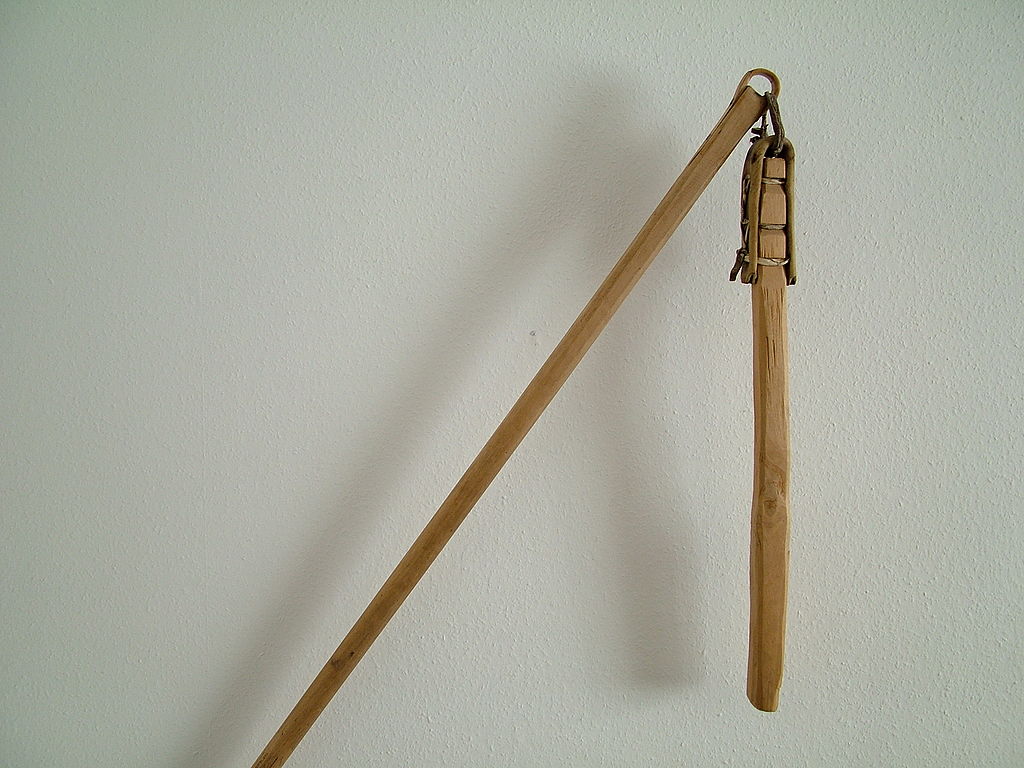
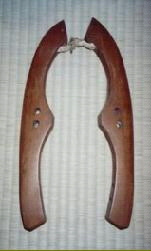
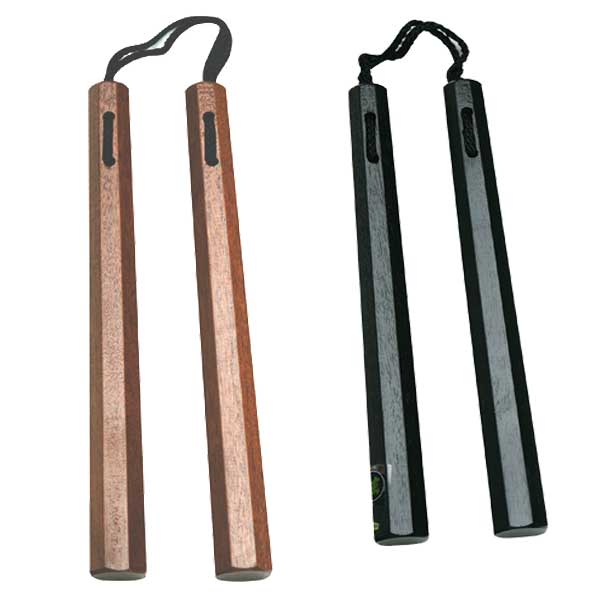
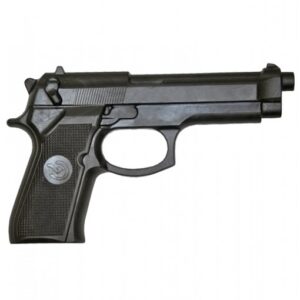
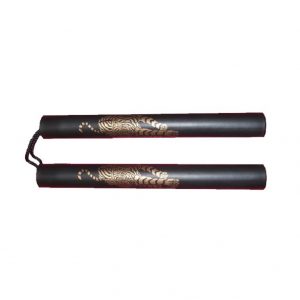






Reviews
There are no reviews yet.